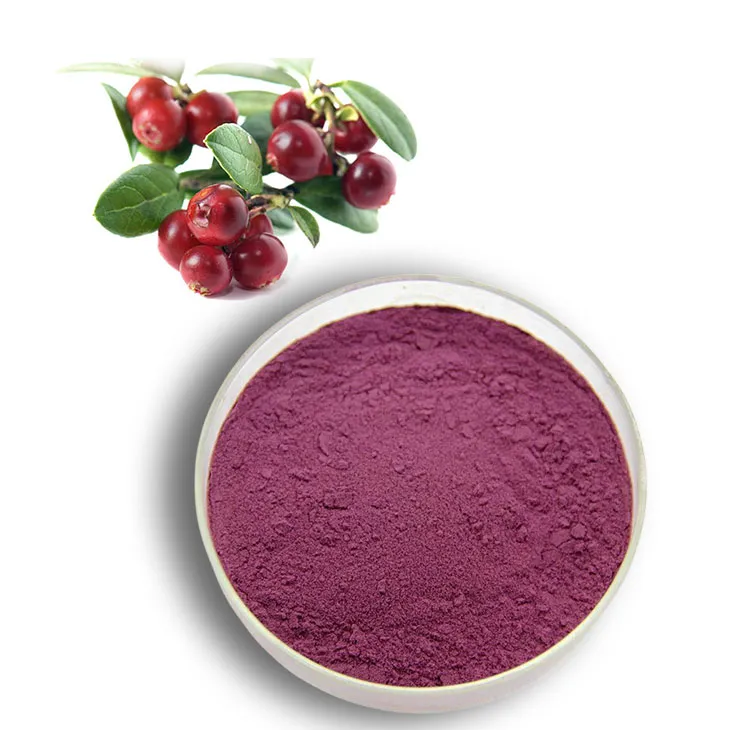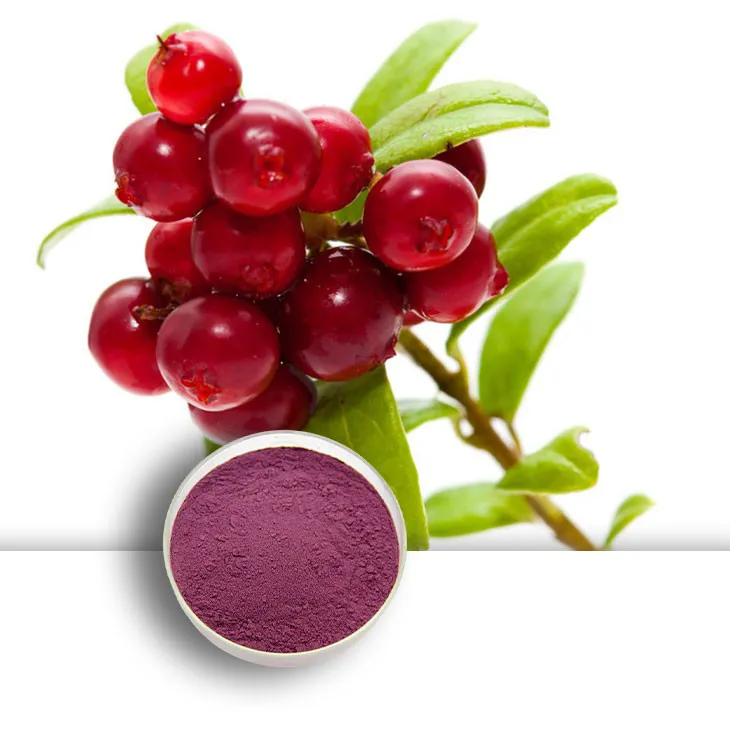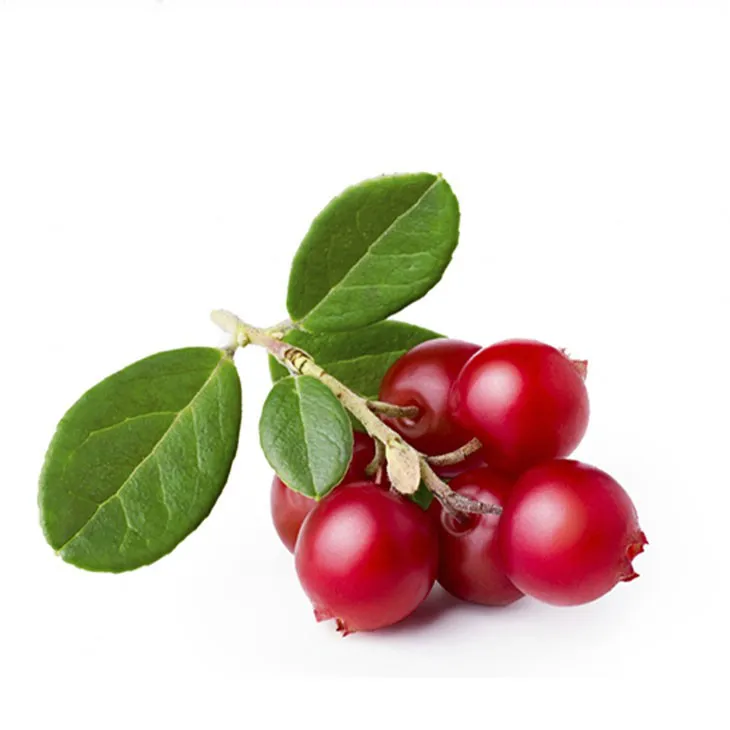- 0086-571-85302990
- sales@greenskybio.com
The flavor of ripe European bilberries and natural European bilberry extracts.
2024-11-14

1. Introduction to European Bilberries
The European bilberry (Vaccinium myrtillus) is a small, dark - blue berry that has been an important part of European cuisine and traditional medicine for centuries. Native to Europe, these berries grow in heathlands, moorlands, and mountainous regions. They are often found in areas with acidic soil and cool climates.

2. The Flavor of Ripe European Bilberries
2.1 Sweetness and Tartness
The flavor of ripe European bilberries is a captivating blend of sweetness and tartness. The sweetness comes from the natural sugars present in the berries, such as fructose and glucose. These sugars develop as the bilberries ripen on the bush, and they contribute to the overall pleasant taste. However, the tartness is also a crucial element of the flavor profile. It is due to the presence of various acids, including citric acid and malic acid. The balance between the sugars and acids is what gives the ripe bilberries their unique taste. When you bite into a ripe bilberry, you first notice the initial burst of sweetness, which is then followed by a subtle tartness that lingers on the palate.
2.2 Other Flavor Components
In addition to the basic sweetness and tartness, ripe European bilberries also have other flavor components. There are floral and fruity notes that add complexity to the taste. These notes can be attributed to the presence of various volatile compounds, such as esters and terpenes. The floral notes give the bilberries a delicate and fragrant quality, while the fruity notes enhance the overall fruitiness of the flavor. Some people also detect a slightly earthy undertone in the flavor of bilberries, which may be related to the plant's growth environment and the nutrients it absorbs from the soil.

3. Chemical Composition and Flavor Development
3.1 Sugars and Their Role
As mentioned earlier, sugars play a significant role in the flavor of ripe European bilberries. During the ripening process, the levels of sugars increase. Fructose is one of the main sugars in bilberries, and it is known for its high sweetness intensity. Glucose is also present, and together with fructose, they contribute to the overall sweet taste. The accumulation of sugars is influenced by factors such as sunlight exposure, temperature, and the stage of ripeness. Adequate sunlight and warm temperatures can promote the synthesis and accumulation of sugars in the berries.
3.2 Acids and Their Influence
Acids are another important component in the chemical composition of bilberries that affects their flavor. Citric acid and malic acid are the two main acids present. Citric acid gives a sharp, tangy flavor, while malic acid has a slightly milder tartness. The ratio of these acids to sugars determines the overall balance of the flavor. If there is too much acid, the bilberries will taste overly tart, while too much sugar can make them overly sweet. The development of acids during the growth and ripening of bilberries is also affected by environmental factors. For example, soil acidity can influence the uptake of nutrients and the synthesis of acids in the plant.
3.3 Volatile Compounds and Flavor Complexity
The volatile compounds in European bilberries are responsible for the more subtle and complex flavors. Esters, for example, are formed during the ripening process and contribute to the fruity and floral notes. Terpenes are another group of volatile compounds that can add a fresh, pine - like aroma in some cases. These volatile compounds are present in small quantities but have a significant impact on the overall flavor profile. Their production is influenced by genetic factors as well as environmental conditions, such as temperature and humidity.

4. Natural European Bilberry Extract
4.1 Production Process
The production of natural European Bilberry Extract involves several steps. First, high - quality bilberries are carefully selected. These bilberries should be ripe and free from any signs of disease or damage. The selected bilberries are then washed thoroughly to remove any dirt or debris. After that, they are usually macerated or crushed to break down the cell walls and release the active compounds. The resulting pulp is then subjected to extraction using a suitable solvent, such as ethanol or water. The solvent helps to dissolve the active compounds, including anthocyanins, flavonoids, and other nutrients. Once the extraction is complete, the solvent is removed through evaporation or other separation techniques, leaving behind a concentrated Bilberry Extract.
4.2 Nutritional Content
Natural European bilberry extract is a rich source of various nutrients. Anthocyanins are one of the most important components. These are pigments that give the bilberries their dark - blue color. Anthocyanins are also powerful antioxidants, which can help to protect the body against oxidative stress. In addition to anthocyanins, the extract contains flavonoids, such as Quercetin and myricetin. These flavonoids have anti - inflammatory properties and can also contribute to heart health. The extract also contains vitamins, such as vitamin C and vitamin E, which are important for maintaining a healthy immune system and skin health.
4.3 Applications in the Pharmaceutical Industry
The anti - inflammatory and antioxidant properties of natural European bilberry extract make it a valuable ingredient in the pharmaceutical industry. It can be used in the treatment of various inflammatory conditions, such as arthritis. The anthocyanins in the extract may help to reduce inflammation by inhibiting the production of inflammatory mediators. Additionally, the extract may have potential applications in eye health. Some studies suggest that the anthocyanins can improve visual acuity and protect the eyes from damage caused by free radicals. It may also be beneficial in the prevention of certain cardiovascular diseases, as the flavonoids can help to lower blood pressure and improve blood lipid profiles.
4.4 Applications in the Cosmetic Industry
In the cosmetic industry, natural European bilberry extract is highly prized for its anti - aging properties. The antioxidants in the extract, such as anthocyanins and vitamin C, can help to fight against free radicals that cause skin aging. Free radicals can damage the skin cells, leading to wrinkles, fine lines, and loss of elasticity. By neutralizing these free radicals, the bilberry extract can help to keep the skin looking youthful and radiant. It can also be used in products for treating skin conditions such as acne, as the anti - inflammatory properties can help to reduce redness and inflammation.
5. Sustainable Harvesting Practices
5.1 Importance of Sustainability
Sustainable harvesting of European bilberries is crucial for ensuring the long - term availability of both the delicious flavor and the valuable extract. Bilberries are a natural resource, and if they are over - harvested, it can lead to a decline in their population. This can have a negative impact on the ecosystem, as bilberries are an important food source for wildlife, such as birds and small mammals. Moreover, sustainable harvesting is necessary to maintain the quality of the bilberries. If the plants are not given enough time to recover and reproduce, the quality of the berries may deteriorate, affecting both the flavor and the nutritional content of the extract.
5.2 Harvesting Guidelines
There are several guidelines for sustainable harvesting of European bilberries. One important rule is to only harvest a certain percentage of the available berries. This allows the plants to have enough berries left for seed production and to maintain their growth and vitality. For example, it is recommended to harvest no more than 50% of the ripe bilberries in a given area. Another guideline is to avoid harvesting in areas where the bilberry population is already under stress, such as areas that have been recently damaged by wildfires or other natural disasters. Additionally, it is important to use proper harvesting techniques, such as using hand - picking instead of using machinery that can damage the plants.
5.3 Conservation Efforts
In addition to sustainable harvesting, there are also conservation efforts in place to protect European bilberries. Some areas where bilberries grow are designated as protected areas, where harvesting may be restricted or regulated. Conservation organizations are also working to raise awareness about the importance of bilberries and to promote sustainable harvesting practices. These efforts include educational programs for local communities and tourists, as well as research to better understand the ecology of bilberries and how to protect them.
6. Conclusion
The ripe European bilberry offers a unique and complex flavor that is a result of its chemical composition. The balance between sugars, acids, and volatile compounds creates a taste that is both sweet and tart, with floral and fruity notes. The natural European bilberry extract, on the other hand, is a valuable source of nutrients with numerous applications in the pharmaceutical and cosmetic industries. However, to ensure the continued availability of both the flavor and the extract, it is essential to practice sustainable harvesting. By following sustainable harvesting guidelines and conservation efforts, we can enjoy the delicious flavor of bilberries and the benefits of their extract for generations to come.
FAQ:
What are the main components contributing to the ripe flavor of European bilberries?
The ripe flavor of European bilberries is mainly due to the balance of sugars and acids in their chemical composition. The presence of different types of sugars provides sweetness, while acids contribute to the tartness, creating the complex flavor profile that is characteristic of ripe bilberries.
How is the natural European bilberry extract obtained?
The natural European bilberry extract is obtained from carefully selected bilberries. Through a series of extraction processes, the beneficial components of the bilberries are isolated and concentrated to form the extract. These extraction methods are designed to ensure high - quality extract with maximum retention of its active nutrients.
What are the anti - inflammatory properties of the European bilberry extract?
The European bilberry extract contains various bioactive compounds such as anthocyanins. These compounds have been shown to have anti - inflammatory properties by modulating certain signaling pathways in the body. They can help reduce inflammation at the cellular level, which may be beneficial in treating various inflammatory conditions.
Why is the European bilberry extract used in the cosmetic industry?
The European bilberry extract is used in the cosmetic industry due to its anti - aging properties. The antioxidant components in the extract, like anthocyanins, can neutralize free radicals that are responsible for skin aging. It can also improve skin elasticity and complexion, making it a valuable ingredient in cosmetic products.
What are the sustainable harvesting practices for European bilberries?
Sustainable harvesting practices for European bilberries involve careful management of the bilberry - growing areas. This may include measures such as controlled picking, leaving enough berries for natural reseeding, and protecting the natural habitats of the bilberries. These practices ensure that the bilberries can continue to be harvested in the future while maintaining the ecological balance of their habitats.
Related literature
- The Flavor Chemistry of European Bilberries"
- "Nutritional and Medicinal Properties of European Bilberry Extract"
- "Sustainable Harvesting of European Bilberries: Current Practices and Future Prospects"
- ▶ Hesperidin
- ▶ citrus bioflavonoids
- ▶ plant extract
- ▶ lycopene
- ▶ Diosmin
- ▶ Grape seed extract
- ▶ Sea buckthorn Juice Powder
- ▶ Beetroot powder
- ▶ Hops Extract
- ▶ Artichoke Extract
- ▶ Reishi mushroom extract
- ▶ Astaxanthin
- ▶ Green Tea Extract
- ▶ Curcumin Extract
- ▶ Horse Chestnut Extract
- ▶ Other Problems
- ▶ Boswellia Serrata Extract
- ▶ Resveratrol Extract
- ▶ Marigold Extract
- ▶ Grape Leaf Extract
- ▶ blog3
- ▶ Aminolevulinic acid
- ▶ Cranberry Extract
- ▶ Red Yeast Rice
- ▶ Red Wine Extract
-
Hedyotis Diffusa Extract
2024-11-14
-
Curcumin Extract
2024-11-14
-
Almond Extract Powder
2024-11-14
-
Cactus Extract
2024-11-14
-
Acai Berry Extract
2024-11-14
-
Resveratrol extract
2024-11-14
-
Apricot Powder
2024-11-14
-
Rose Hip Extract
2024-11-14
-
Garcinia Cambogia Extract
2024-11-14
-
Thunder God Vine Extract
2024-11-14





















